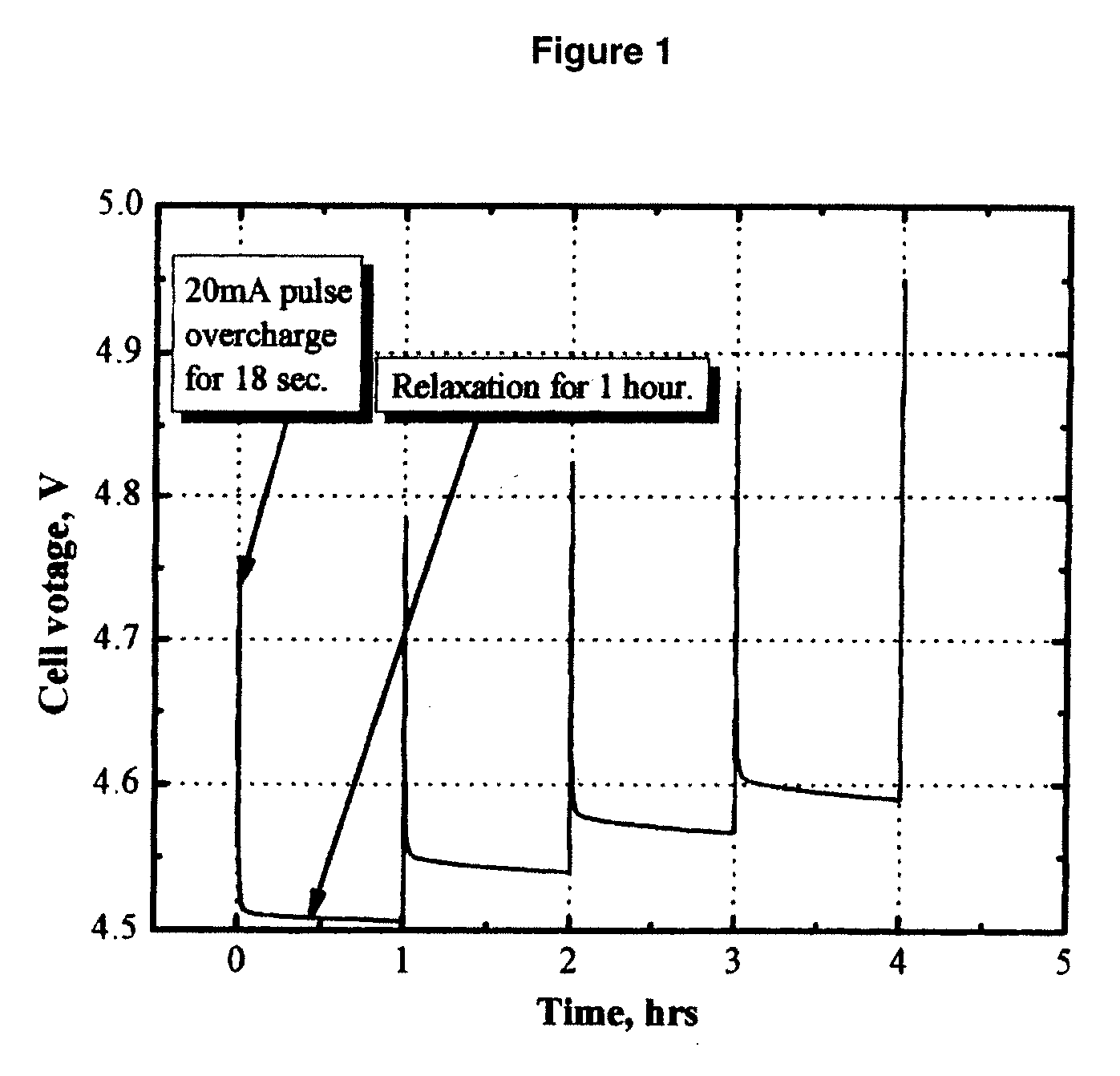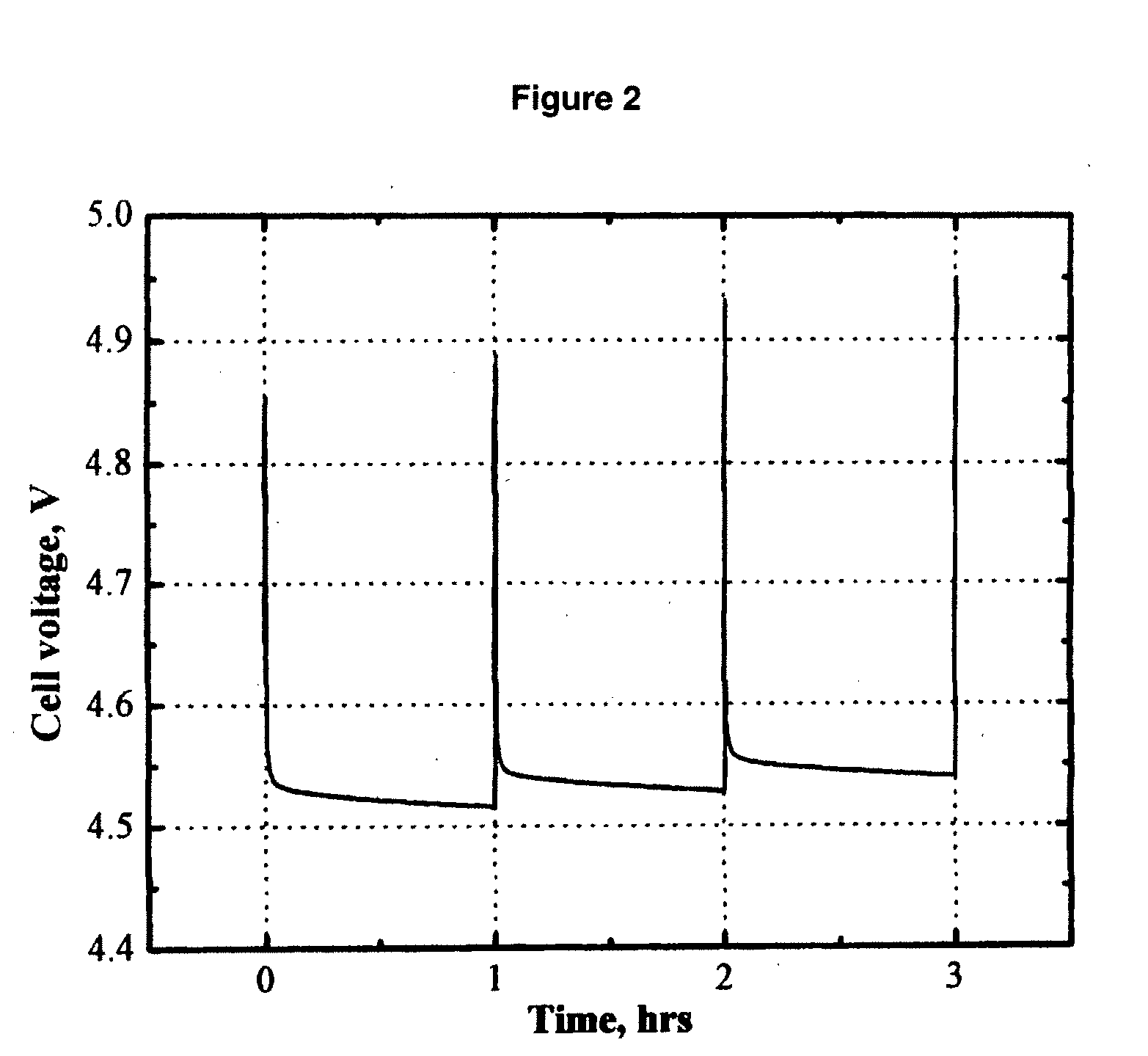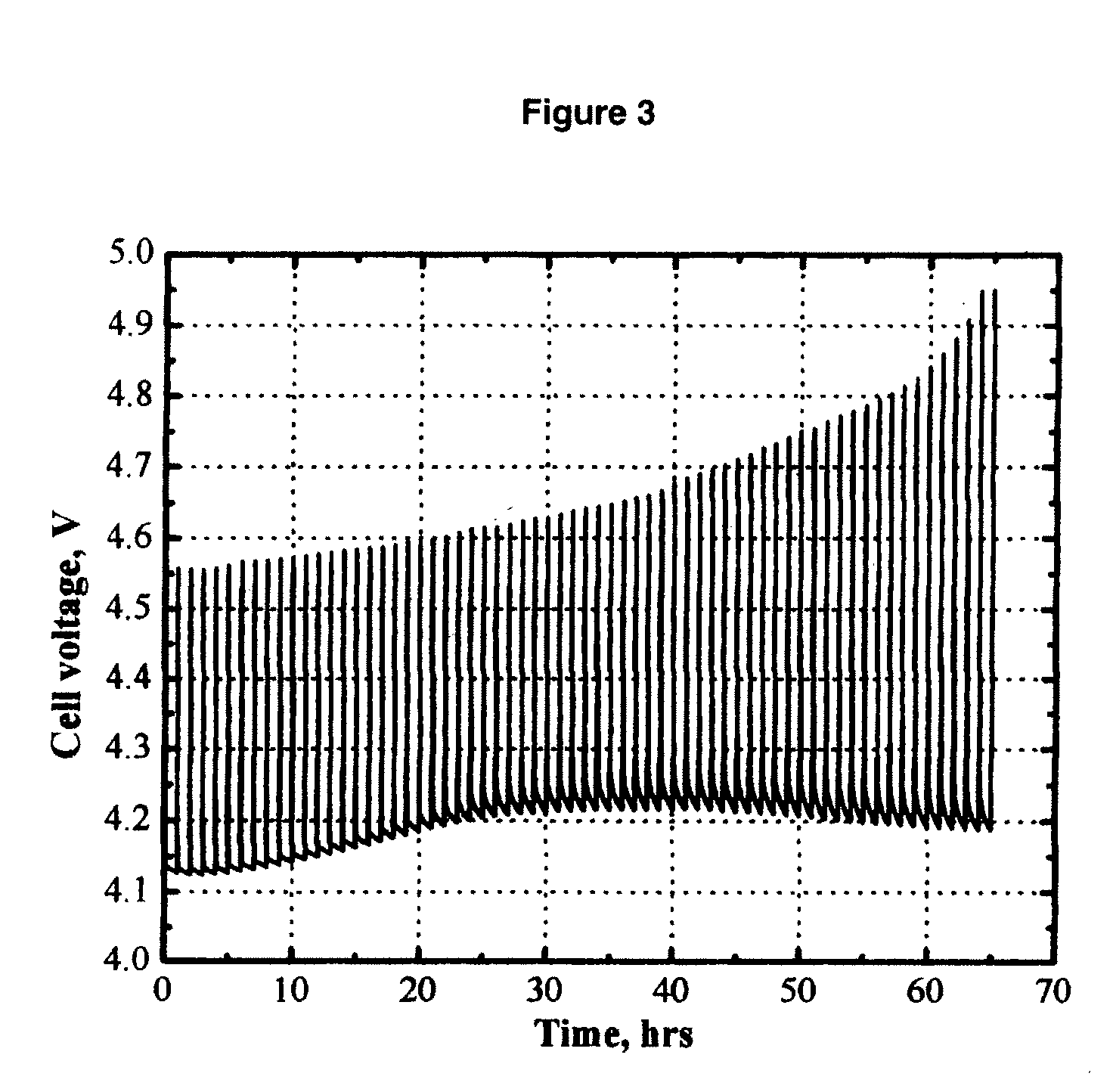Electrolytes, cells and methods of forming passivaton layers
a technology of passivaton and electrolyte, which is applied in the direction of non-aqueous electrolyte cells, cell components, sustainable manufacturing/processing, etc., can solve the problem of significant irreversible capacity loss, and achieve the effect of improving the thermal stability of lithium
- Summary
- Abstract
- Description
- Claims
- Application Information
AI Technical Summary
Benefits of technology
Problems solved by technology
Method used
Image
Examples
control example 1a
[0062]FIG. 1 shows the cell voltage of a MCMB / Li1.1[Mn1 / 3Ni1 / 3Co1 / 3]0.9O2 (L333) lithium-ion cell that was pulse-overcharged. The electrolyte used was 1.2 M LiPF6 in EC / PC / DMC (1:1:3 by weight, EC stands for ethylene carbonate, PC stands for propylene carbonate, and DMC stands for dimethyl carbonate.). The cell was pulse-overcharged at an 8 C rate (20 mA) for 18 seconds every 60 minutes. FIG. 1 clearly shows that the cell voltage steadily increased with the number of pulse current applied. Only in 4 pulses, the peak voltage of the cell increased to 4.95 V, which is high enough to trigger the decomposition of the positive electrode and the non-aqueous electrolytes.
control example 1b
[0063]FIG. 2 shows the cell voltage of a MCMB / Li1.1[Mn1 / 3Ni1 / 3Co1 / 3]0.9O2 (L333) lithium-ion cell that was pulse-overcharged. The electrolyte used was 0.8 M LiBOB in EC / PC / DMC (1:1:3 by weight). The cell was pulse-overcharged at an 8 C rate (20 mA) for 18 seconds every 60 minutes. FIG. 2 clearly shows that the cell voltage steadily increased with the number of pulse current applied. Only in 4 pulses, the peak voltage of the cell increased to 4.95 V, which is high enough to trigger the decomposition of the positive electrode and the non-aqueous electrolytes.
control example 1c
[0064]FIG. 3 shows the cell voltage of a MCMB / Li1.1[Mn1 / 3Ni1 / 3Co1 / 3]0.9O2 (L333) lithium-ion cell that was pulse-overcharged. The electrolyte used was 0.4 M Li2B12F9H3 (AP-F9) in EC / PC / DMC (1:1:3 by weight). The cell was pulse-overcharged at an 8 C rate (20 mA) for 18 seconds every 60 minutes. FIG. 3 clearly shows that the salt AP-F9 has the redox shuttle capability to carry charge through the lithium-ion cell and hence improve the pulse overcharge tolerance of the cell.
PUM
| Property | Measurement | Unit |
|---|---|---|
| temperature | aaaaa | aaaaa |
| voltage | aaaaa | aaaaa |
| temperatures | aaaaa | aaaaa |
Abstract
Description
Claims
Application Information
 Login to View More
Login to View More - R&D
- Intellectual Property
- Life Sciences
- Materials
- Tech Scout
- Unparalleled Data Quality
- Higher Quality Content
- 60% Fewer Hallucinations
Browse by: Latest US Patents, China's latest patents, Technical Efficacy Thesaurus, Application Domain, Technology Topic, Popular Technical Reports.
© 2025 PatSnap. All rights reserved.Legal|Privacy policy|Modern Slavery Act Transparency Statement|Sitemap|About US| Contact US: help@patsnap.com



